► Third-generation Duster driven on and off-road
► Petrol and new Hybrid model for UK market
► Prices to start from ‘under £20,000’
Hybrids! Dakar! New models fighting the biggest players! Dacia’s confidence in itself is through the roof, and nothing the brand has done recently proves that more than the bold and chunky new-generation Duster.
Dacia points out that it’s managed to sell around 2.4 million of its family SUV (Dacia-badged ones, at least) since 2010. By the brand’s own calculations, that’s around 500 per day. A lot is riding on this one having more than just good looks, then…
At a glance
Pros: Neat and clever interior, Hybrid efficiency, handy off road and sweet on it
Cons: Wind and powertrain noise, boosty petrol, lumpy manual, cosy rear space
What’s new?
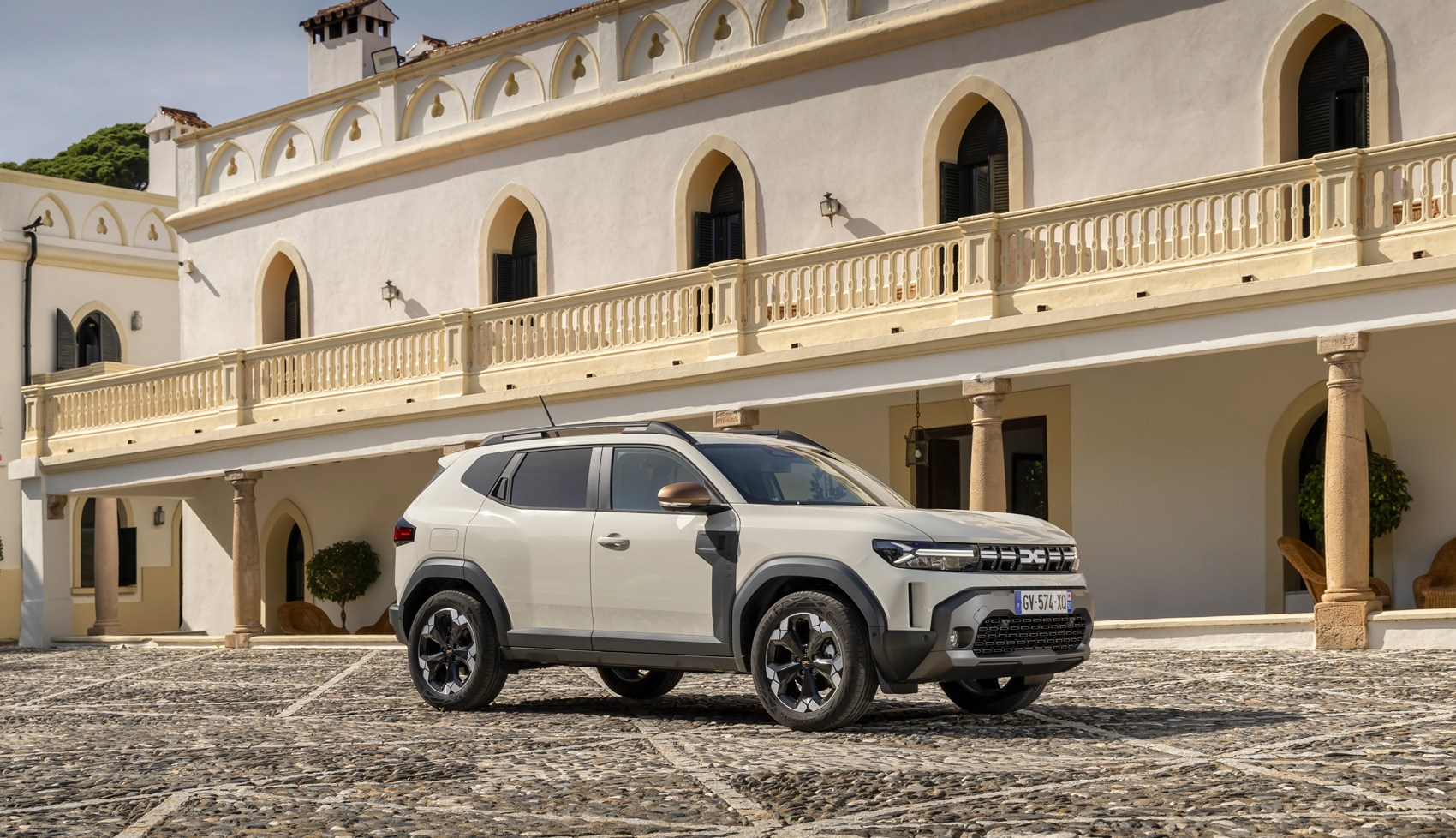
It’s an all-new generation of Duster here, with a complete exterior and interior rethink, deploying Dacia’s latest design language. Dacia’s included more recycled materials, with 20 per cent of all of the car’s plastics now coming from recycled sources. The exterior plastics have a speckled colour effect to them that Dacia calls Starkle.
On top of that, the Duster moves from Renault-Nissan’s rather creaky B platform (which has been used since the likes of the K12 Nissan Micra and third-generation Renault Clio) onto the much newer CMF-B architecture, bringing along new powertrain options (like a Hybrid) and promising much refreshed dynamics.
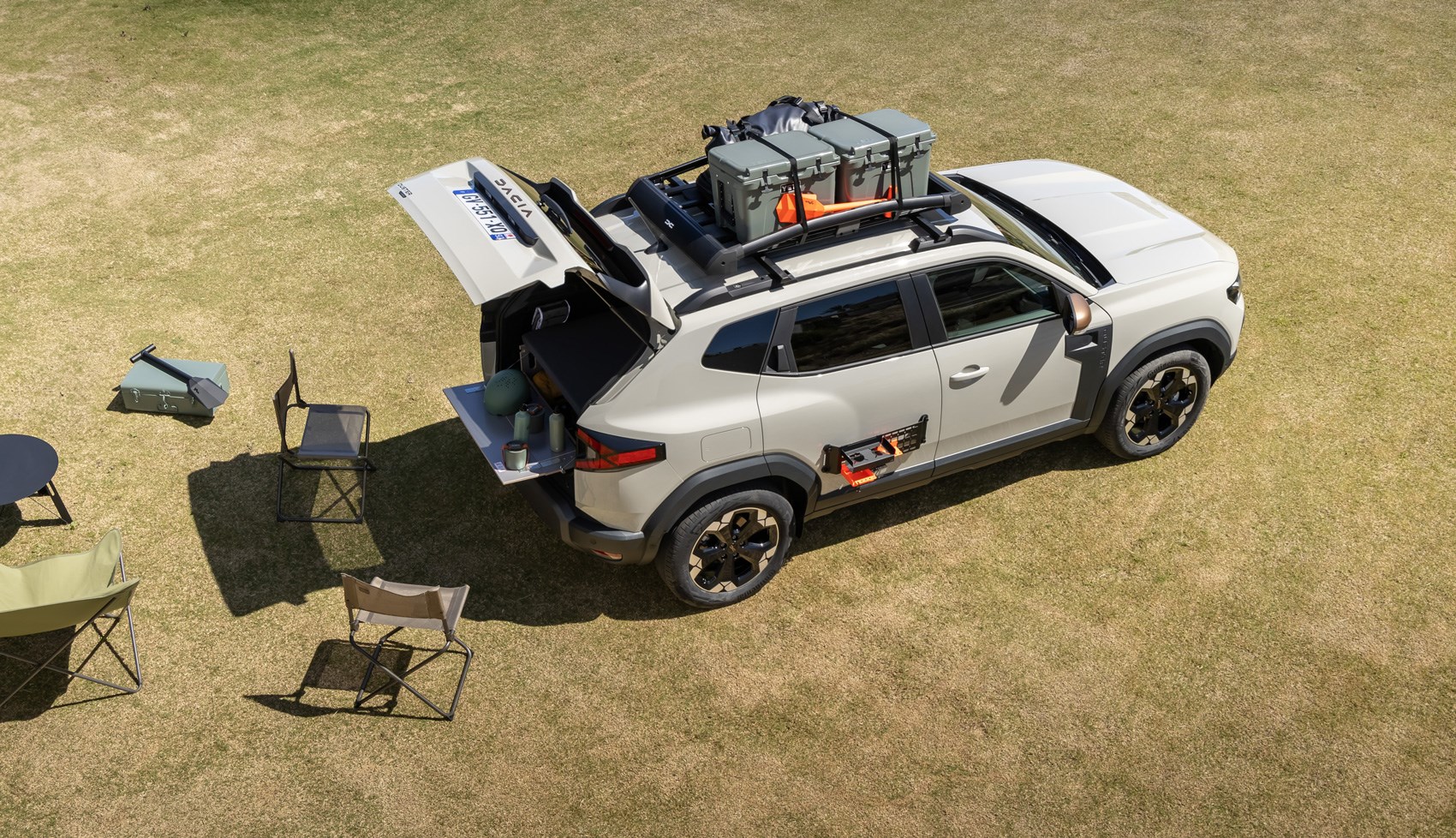
The new Duster also benefits from the brand’s new YouClip system that allows you to purchase handy accessories that are all anchored onto a universal clip point. There are a couple dotted around the interior, and YouClip options include things like additional cupholders and phone holders. Elsewhere, the Dacia brand’s range of InNature add-ons include things like a properly tough-looking roof rack and a specific version of the brand’s Sleep Pack that fits inside the Duster’s boot. But, from our real-world test of the Sleep Pack in a Jogger, we can’t say we’re that enamoured by it.
What are the specs?
There are four specs to choose from with the Duster: entry-level Essential, mid-tier Expression and two equal-top trims – Extreme and Journey.
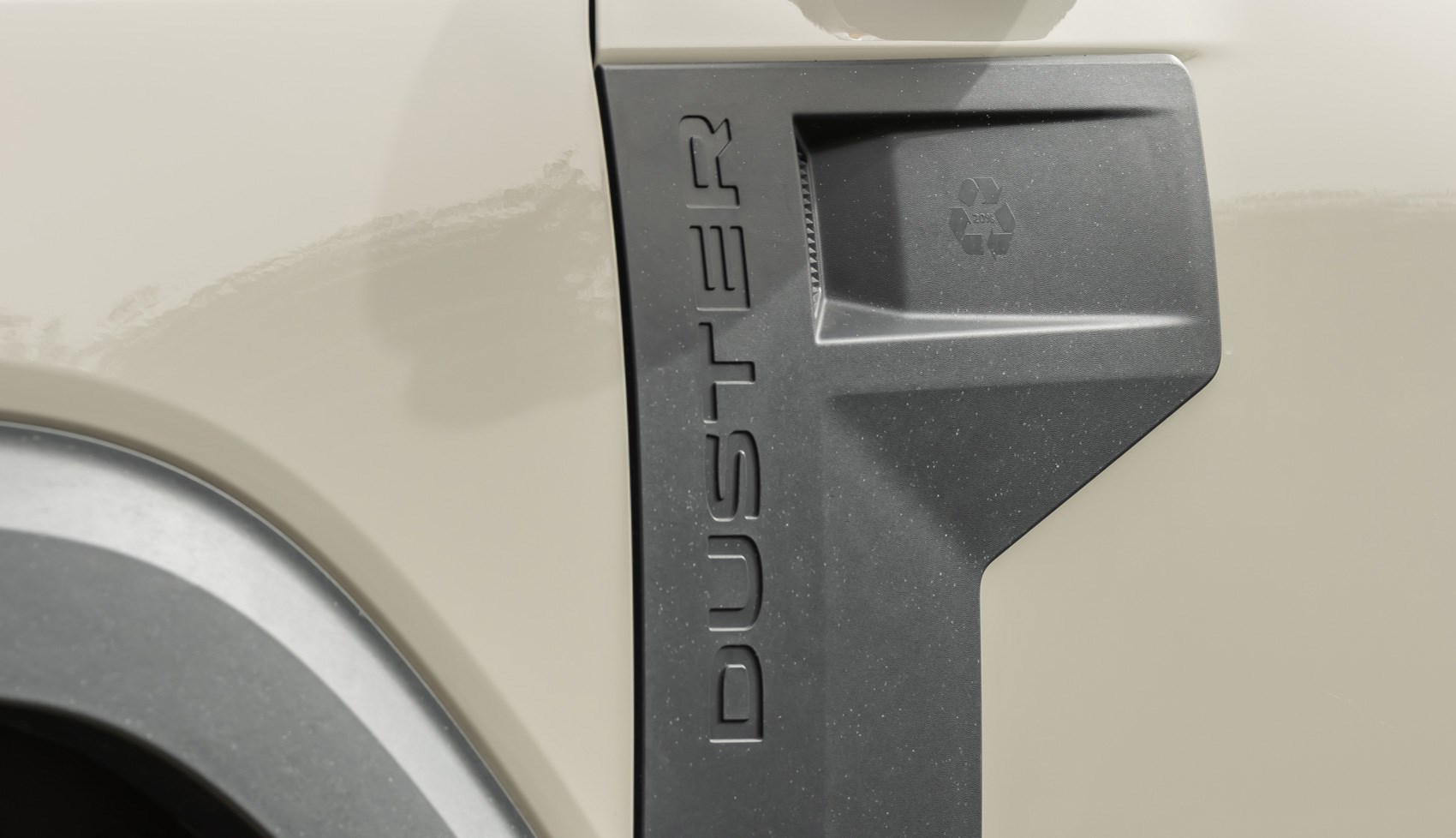
Essential Dusters feature all the basics (including a lot of mandated safety kit) as well as roof rails, rear parking sensors and a holder in place of a central infotainment screen for your phone. Expression adds 17-inch alloys, a digital instrument cluster, a 10.1-inch central infotainment screen with wireless Apple CarPlay and Android Auto and a rear parking camera.
Then we get to what Dacia considers its top two trims. Dacia’s realised that around 80 per cent of its Duster buyers go for a top model, so has decided to offer two that have similar tech but different designs. Extreme is the more familiar of high-end Dusters, featuring chunky 18-inch alloys, rubber mats, automatic air-con, an infotainment upgrade that throws in live navigation and flashes of copper around the car. Journey is the new offer, which goes less hard on the tough stuff and adds more technology beyond Extreme like an electric parking brake, wireless phone charger and a 3D sound system.
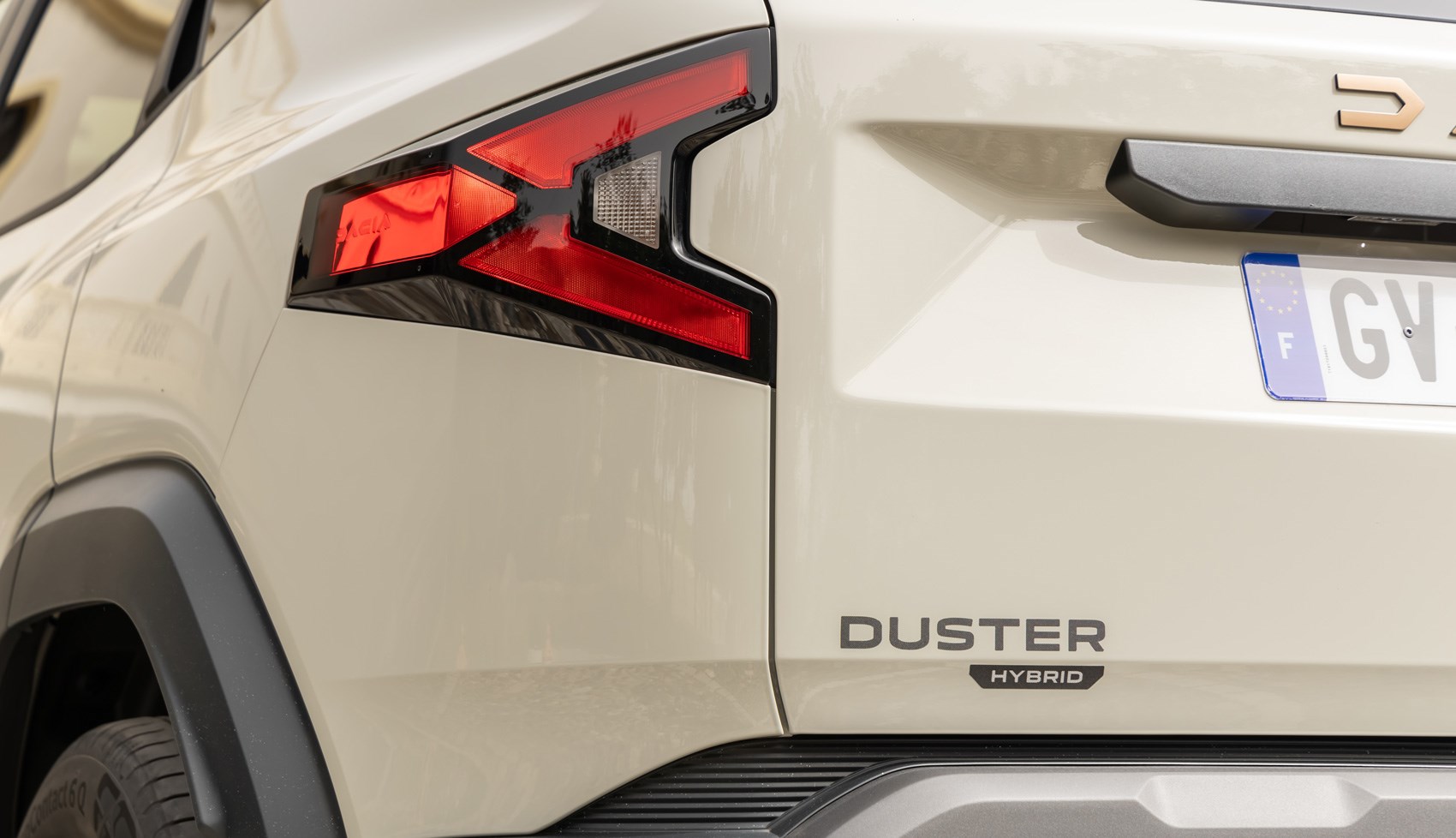
As for engines for the UK market, we can have either a buzzy 1.2-litre three-cylinder TCe engine or – new for the Duster – a Hybrid model. Other markets benefit from Dacia’s Bi-Fuel LPG-and-petrol-combo powertrain, but Dacia’s not selling it here because no one really buys it; Dacia’s senior vice president for marketing and sales, Xavier Martinet, says that the UK’s already-small LPG infrastructure ‘is busy being replaced by electric car chargers.’
The 128bhp TCe model is comes as a six-speed manual-only but can be had with two- or four-wheel drive. Then there’s the Hybrid, which is new to the Duster but not new to Dacia or the Renault Group. It’s the same system that’s recently been rolled out on the Jogger and is badged as an E-Tech Hybrid powertrain on quite a few Renaults including the very good Clio, trend-following Captur and miserable Arkana.
Prices aren’t confirmed yet for the UK market, but Dacia’s UK brand director, Luke Broad tells us that base Essential models will start from ‘under £20,000’ (but more than £18k). We estimate that the Hybrid model will naturally nudge the price up – we estimate around £22k and up for that model. Orders will open in the autumn, with first deliveries happening towards the end of 2024.
What about the interior?
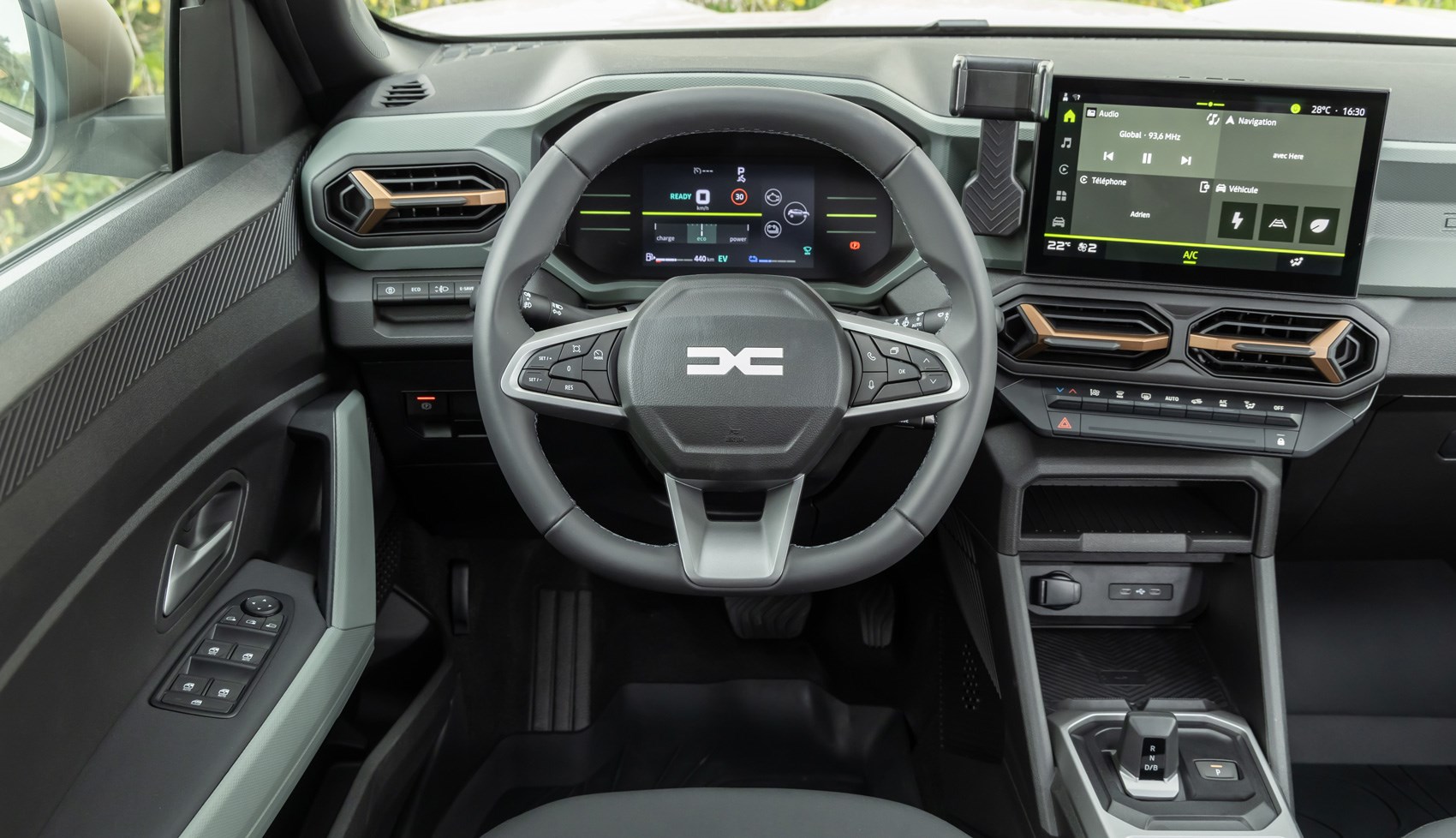
It’s chunky and utilitarian inside but, this time, quite stylish. It still feels built to a price, but in less obvious ways – making the interior experience a much easier pill to swallow. In the front, cubbies of all shapes and sizes are scattered about the place – even a pen holder in the centre console – and those models equipped with a digital instrument cluster will note that it’s very clear and easy to read with a few minor details and graphics you can tweak to your liking.
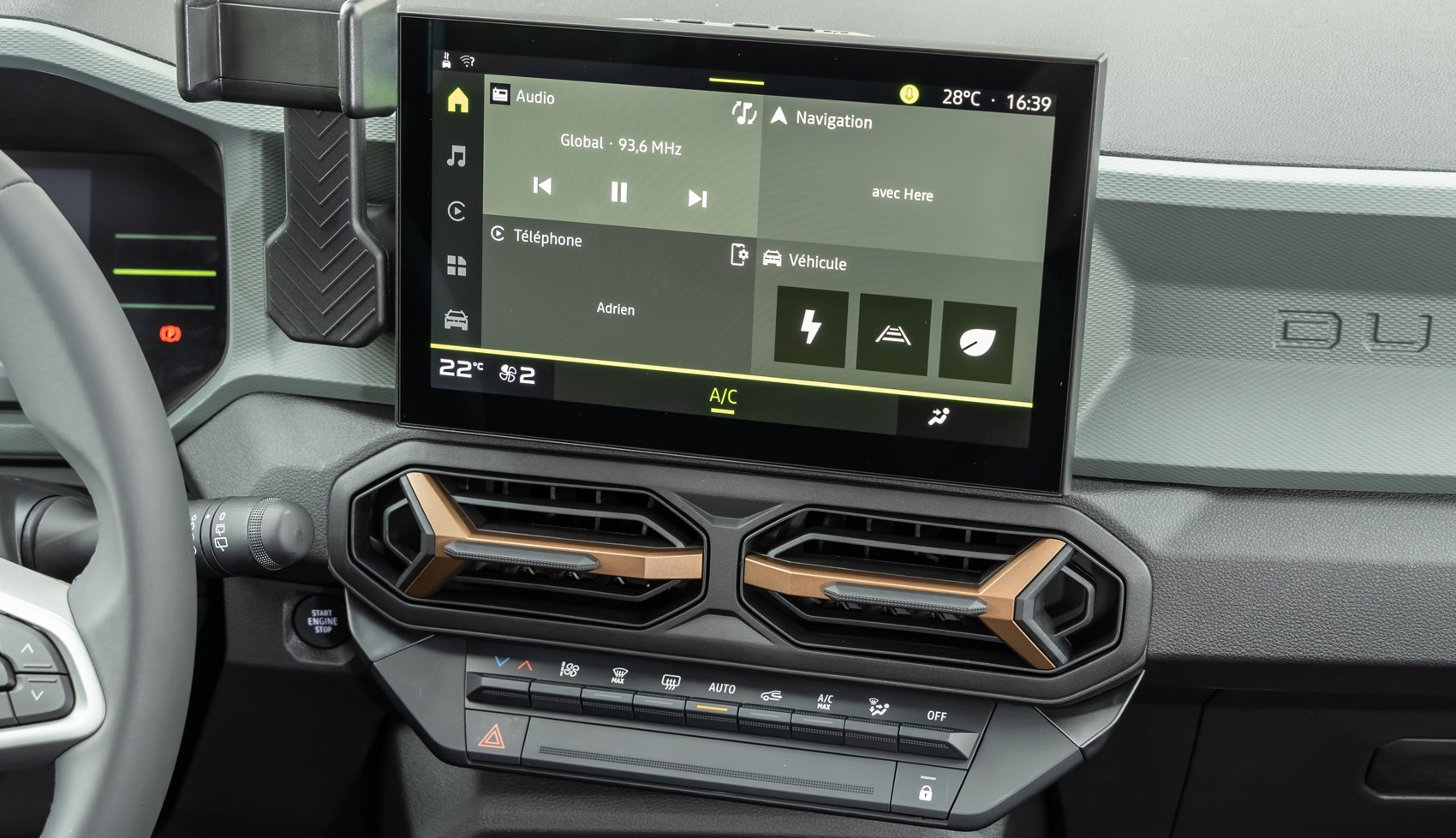
It’s also interesting that Dacia’s gone its own way with infotainment on the central screen on Expression and above. Instead of using Renault’s Google-based OpenR system, the technology is all its own with very clear and simple graphics, reasonably quick responses and easy-to-read mapping from HERE. Like other cars from both Renault and Nissan, the Duster also has a one-button-press ‘Perso’ mode for tweaking the safety aids (including a deeply irritating speed warning system) on or off in an instant.
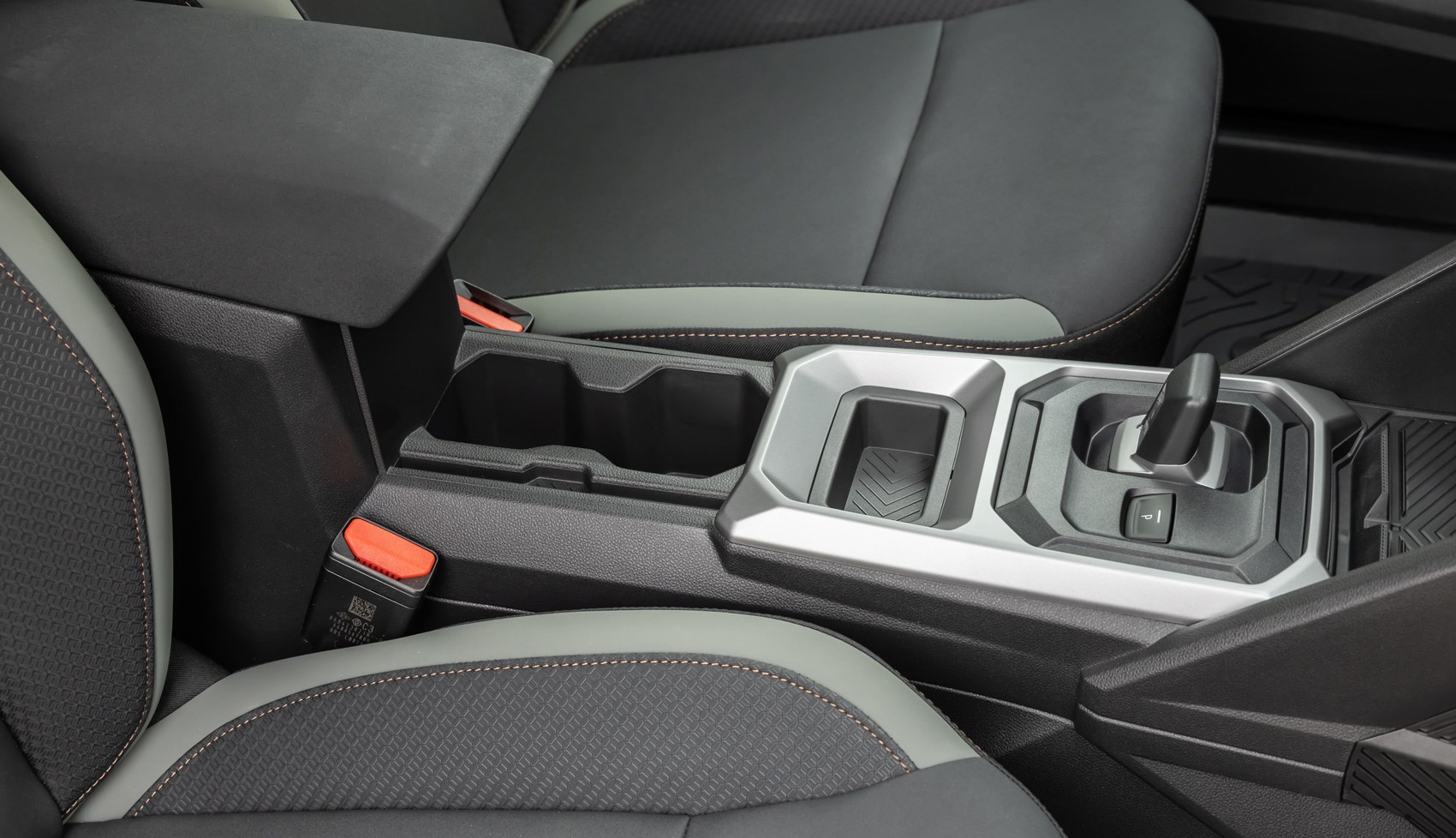
The boot is bigger than before, but the rear space isn’t anything special. There’s a good amount of headroom in the second row, but tall adult passengers will feel tight of legroom – particularly behind taller drivers, and there’s not exactly a buffet of storage spaces or useful points in the second row aside for a pair of USB-C ports.

But – this is a personal one for me as someone who’s 6’2” – this is the first Dacia I’ve ever driven that has a good amount of adjustment for the driver. Previous Dacias have either lacked thigh support or good back support in the seats, or sub-optimal places to put your feet. Not here – hurrah.
How does it drive?
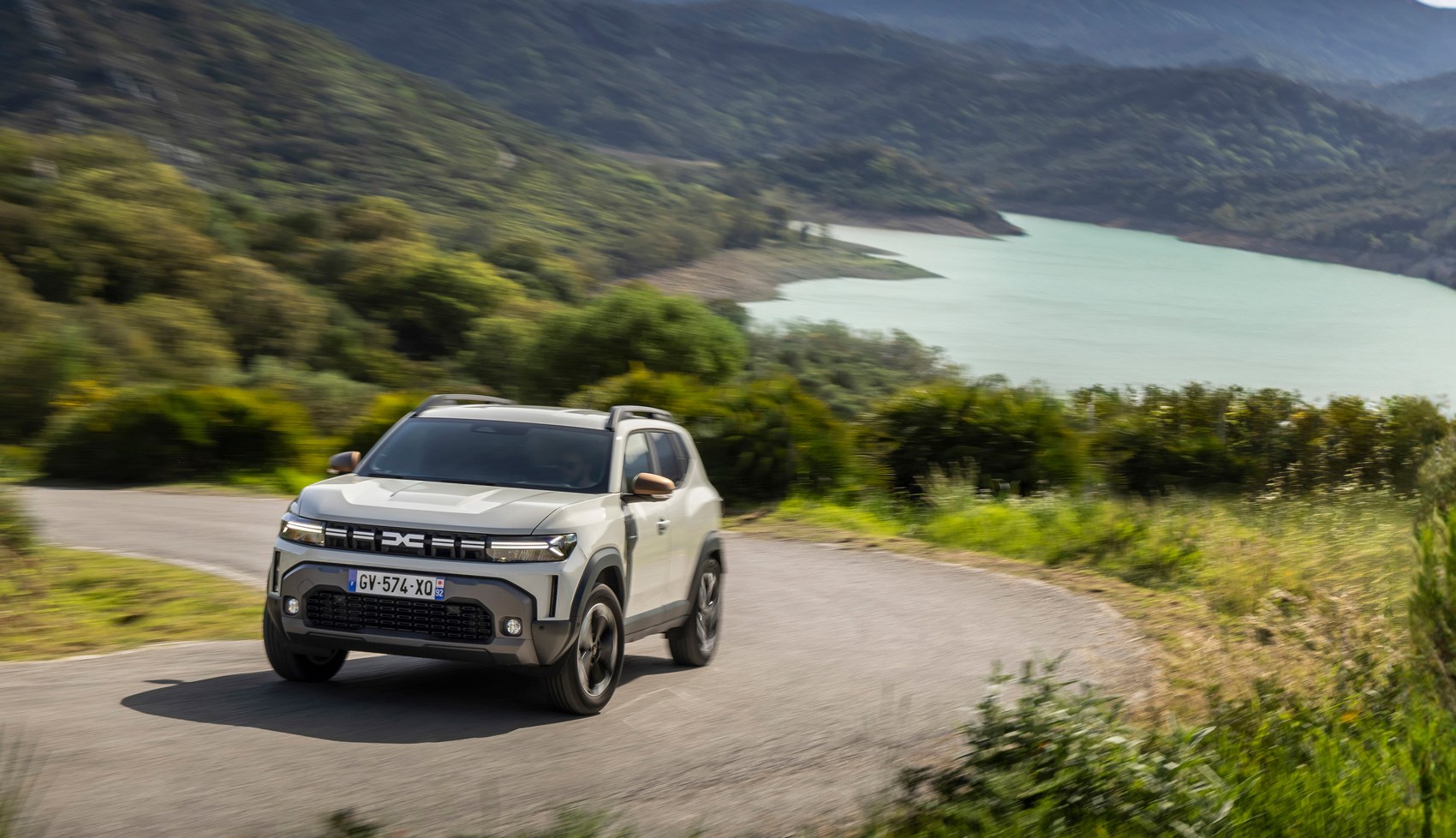
That TCe three cylinder is gargly as ever but feels like more than enough for the Duster’s relatively lightweight construction. It does, however, remain very boosty in its power delivery – something other car makers’ three-cylinder engines have largely managed to kill off. Your only transmission option here is a six-speed manual, but you can have it with either two- or four-wheel drive. The manual shift is a little lumpy and the gaps between first/third/fifth and second/fourth/sixth feel a smidge too close together, but the clutch is light and smooth.
The Duster Hybrid, meanwhile, benefits and suffers from the same great advantages and weird drawbacks that other cars using the same powertrain has. For example, we drove around 75 miles in the Hybrid model and left with a full tank of fuel. Despite a lot of hilly, twisty country roads and high-speed motorway driving, the fuel meter hadn’t moved at all and the car’s predicted range of around 560 miles hadn’t changed much either. It’s smooth and quiet at low speeds, with the system’s aim to keep the engine off through town as much as it can. But boy, oh boy, can it make itself known when the engine comes on, with a loud, persistent drone that seems to activate at random – regardless of where your throttle’ position is. It’s also now your only option for getting an automatic Duster.

Dacia’s made an effort to inject some extra 4×4 toughness into the, er… 4×4 model. As well as new drive modes via a dial on the centre console (mud/sand, snow and off-road that locks power deliver to 50/50 front/rear), 4×4 models are slightly taller and benefit from impressive approach and departure angles. Off-road tech in the higher models like a front camera to see over steep hill crests and, even with the manual gearbox, engaging a gear will allow the car to crawl over terrain and even climb hills without stalling. We experienced a trickier-than-expected off-road course during our time with the Duster and, while I was guided with a pro in the passenger seat, the Duster handled it all easily.
Despite those efforts, on the road is still where most Duster buyers will spend most of their time – and it’s where the Duster behaves rather neatly. The steering – communicated through you via an almost hexagonal wheel design – isn’t brimming with feel or communication but it’s direct enough and weights up in the right way and at the right time the quicker you go. And, regardless of wheel size, the ride is plump and neatly damped – even over bridge expansion joints or whopping potholes on less-than-perfect Spanish roads.
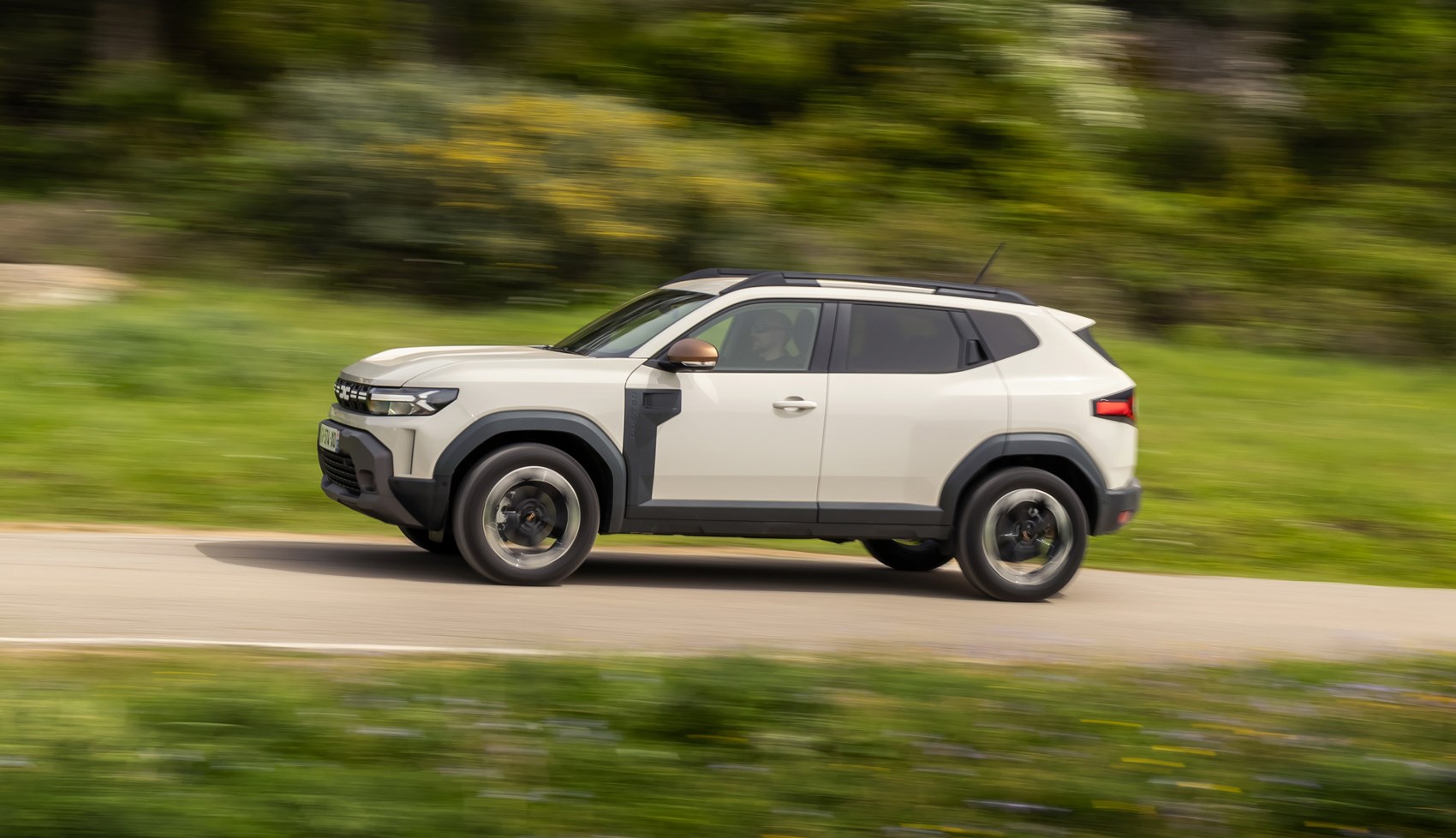
But the cost of the car’s handsome looks come at a bit of a price. The windscreen is shallow and steeply raked, and the car’s blunt front end does no favours when it comes to wind noise refinement.
Before you buy
Once again, even with prices not being confirmed at the time of writing, it’s almost assured that the new-generation Duster will largely sit in a price class of its own in terms of the space and equipment offered for the money. The closest new cars, cash-wise, is the retiring Citroen C3 Aircross, with even models like Skoda’s Kamiq or Ford’s Puma costing north of £24k. And none of these come close to the capability offered by the Duster.
The 1.2 TCe will be enough for most, but the draw of the Duster Hybrid’s efficiency will be strong enough to pull plenty of people its way. And we’re not surprised that so many buy a top-end trim, because even they feel like better value than a base-spec car from another brand.
Verdict: Dacia Duster
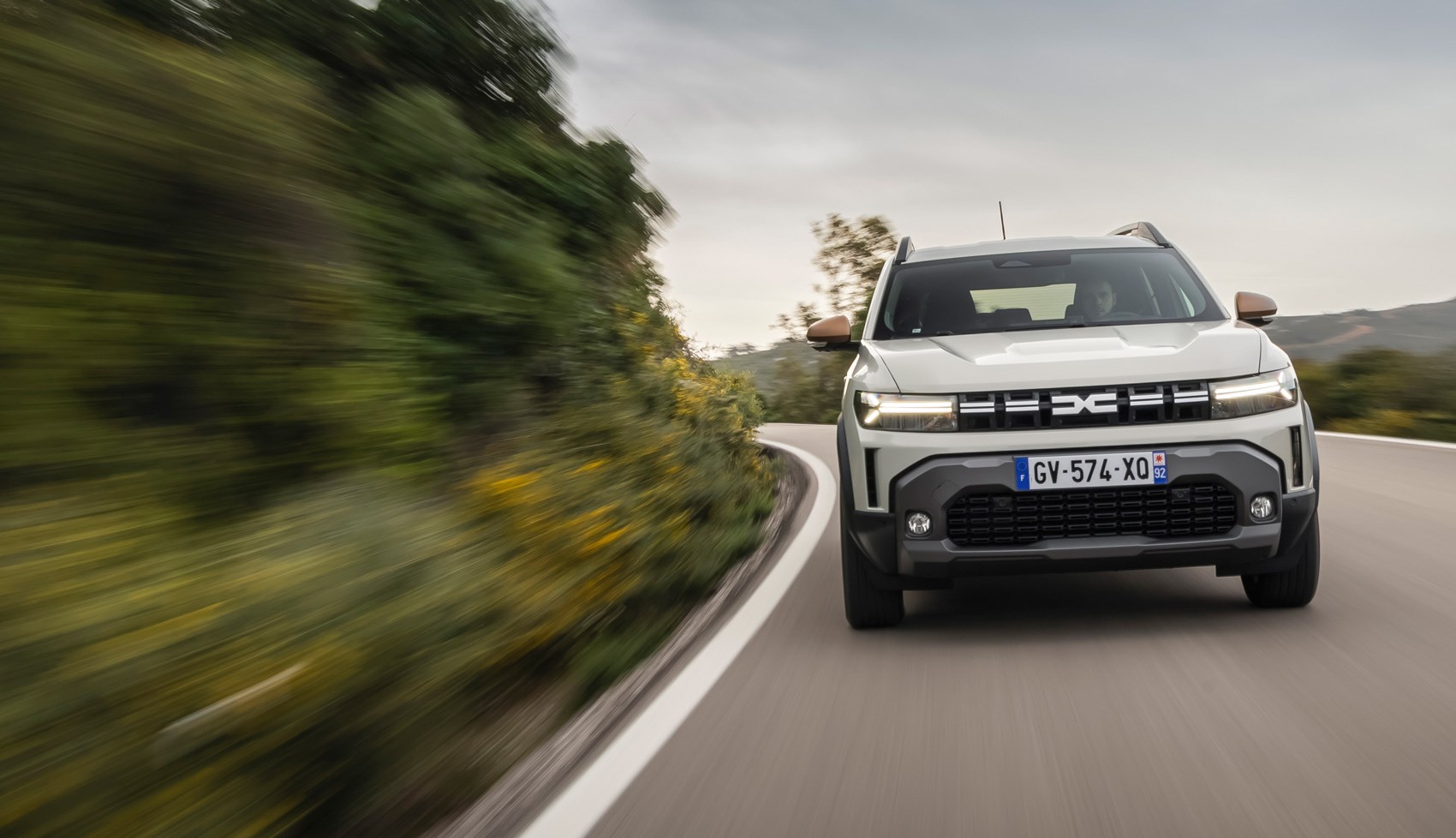
As with previous generations, the new Duster is a car you feel like you’ve spent money on wisely, with the added bonus that it new comes packaged with a design that has presence. The interior is neat, the powertrains are modern and efficient, it handles deftly on the road and manages to be impressively good off it. The boot is bigger than before, and the base tech it offers is useful and unobtrusive.
Both engine options in the UK have their flaws – the TCe petrol’s power delivery and manual gearbox are lumpy, and the Hybrid’s engine noise can be intrusive and unpredictable. Wind noise isn’t great either and, for a family SUV, rear space isn’t anything special.
But the Duster still does a lot so well, and manages to be charming, too. Older Dusters have been desirable because they’ve been great value for money. But this one is desirable full stop.
Specs below are for a Duster Hybrid 140 Extreme 4×2, price is estimate